This guide is intended for experienced system admins familiar with virtual machine technology and DRaaS solutions.
What is VMware vCloud Availability?
VMware vCloud Availability 3.0 (vCAV) is a single interface for workload migration, cloud-to-cloud disaster recovery, and on-premises disaster recovery. vCloud availability is a Disaster Recovery-as-a-Service (DRaaS) solution, combining the functionalities of three VMware solutions:
- vCloud Availability for vCloud Director 2.0
- vCloud Availability Cloud-to-Cloud DR 1.5
- vCloud Director Extender 1.1
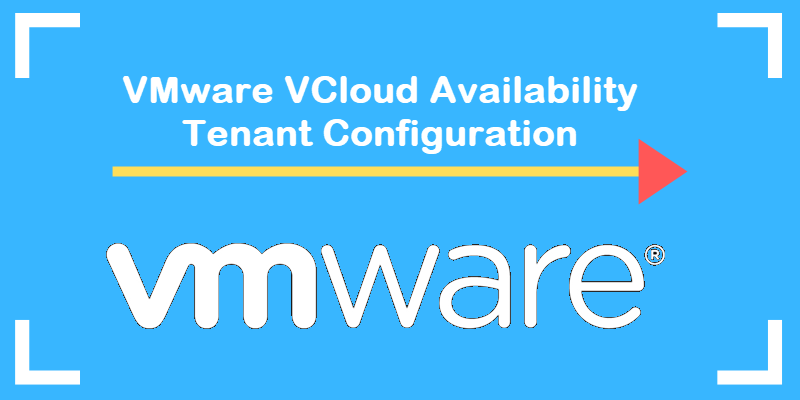
How vCloud Availability Works
vCAV is a single appliance that deploys all of the services required to operate between an on-premises and provider environment. It integrates into the on-premises vCenter and connects to the vCloud environment and corresponding vCAV appliance through a tunnel node. It provides three core functionalities:
Migrating virtual machines from and to your on-premises vCenter.
Protects on-site virtual machines to the vCloud environment.
Protects workloads on your vCloud Director environment by replicating them to your on-prem environment.
All of this is managed through a single interface, vCloud Availability 3.0.
vCloud Availability – Tenant Requirements
Port Requirements for Tenant on Premises Deployment
| Source | Port | Protocol | Destination |
| vCAV Tenant Replicator | 443 | TCP | Tenant PSC |
| vCAV Tenant Replicator | 443 | TCP | Tenant vCenter |
| vCAV Tenant Replicator | 80 and 902 | TCP | Tenant ESXi Hosts |
| vCAV Tenant Replicator | 902 | TCP | Tenant ESXi Hosts |
| Tenant vCenter | 8043 and 8048 | TCP | vCAV Replicator |
| Tenant ESXi Hosts | 44045, 44046 and 31031 | TCP | vCAV Replicator |
Network changes are not required on the client-side. You initiate all traffic from the on-premises site, meaning all traffic flows outbound. Thus, the interface does not require a DNAT rule for tunnel traffic. A regular SNAT is enough.
Tenant Deployment Process
- Deploy vCAV On-Premises Appliance
- Complete the vCAV Configuration Wizard
- Configure Protection Replication
Deploy vCAV On-Premises Appliance Using vSphere Client
The tenant deployment process is similar to all typical VMware OVF deployments. The tenant must install the vCloud Availability On-Premises Appliance OVA into the vCenter they would like to replicate to and/or from. Once deployed, the on-premises appliance is a single vApp that has three roles:
- Replication Engine. Replicates a backup.
- Tunnel Node. This will connect your on-prem vCenter directly with the vCloud Director environment.
- User Interface (UI). Once you finish the configuration wizard, the UI plugin will be loaded into your vCenter on-prem environment.
Prior to deploying the appliance, you will need three pieces of information:
- The tunnel endpoint
- Account credentials
- Organization name
- Start by downloading the OVA from the official VMware website. The file contains all binaries for the vCloud Availability appliance.
- Once downloaded, log into your vSphere Client.
- Navigate to the resource where you plan to deploy the vCAV appliance. The resource can be a data center, cluster, folder, host, or a resource pool.
- Right-click on the resource and select Deploy OVF template from the drop-down menu. The deployment wizard has nine steps.
- Select an OVF template. Opt to install from a local file. Browse to the location of the previously downloaded OVA. Select the vCAV OVA file and click Next.
- Select a name and folder. Type in your desired virtual machine (appliance) name. Next, select a location for your virtual machine.
- Select a compute resource. Choose a host or a cluster the appliance will run on. Click Next and wait for the system to validate. Whenever replicating VMs to the on-prem environment, vCAV will be using the resource you select now.
- Review details. This is a chance for you to evaluate and verify the template.
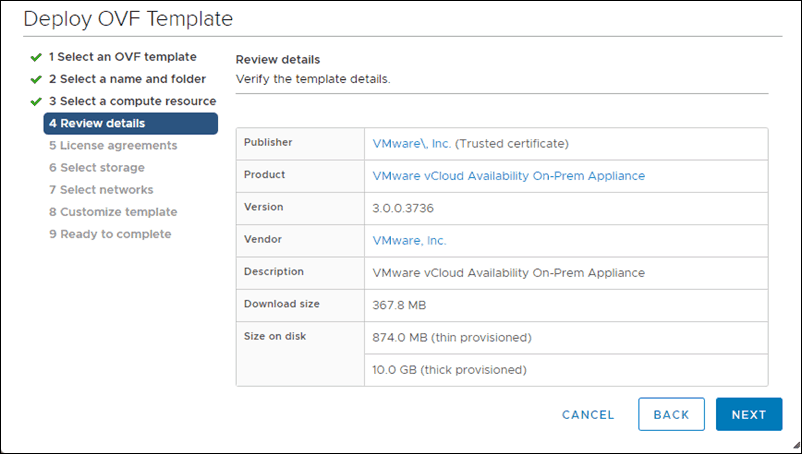
- License agreement. Check the I accept all license agreements checkbox and click Next.
- Configuration. In this case, you are deploying an on-premises appliance. Make sure to select the On-Prem Appliance option.
- Select storage. Configure optional storage options for the deployment.
- Select networks. Choose a destination network for every individual source network.
- Customize template. During this step of the wizard, customize the deployment.
- Root Password. Defining a root password is mandatory. However, you will need to change it when you log in to vCAV for the first time. So, you don’t need to define a very strong password at this point.
- Enable SSH. Select the Enable SSH checkbox (mandatory).
- NTP Server. Enter the NTP server address the vCAV appliance will use. vCenter Server, ESXi, vCloud Director, Platform Services Controller, and the vCloud Availability appliance MUST all use the same NTP server.
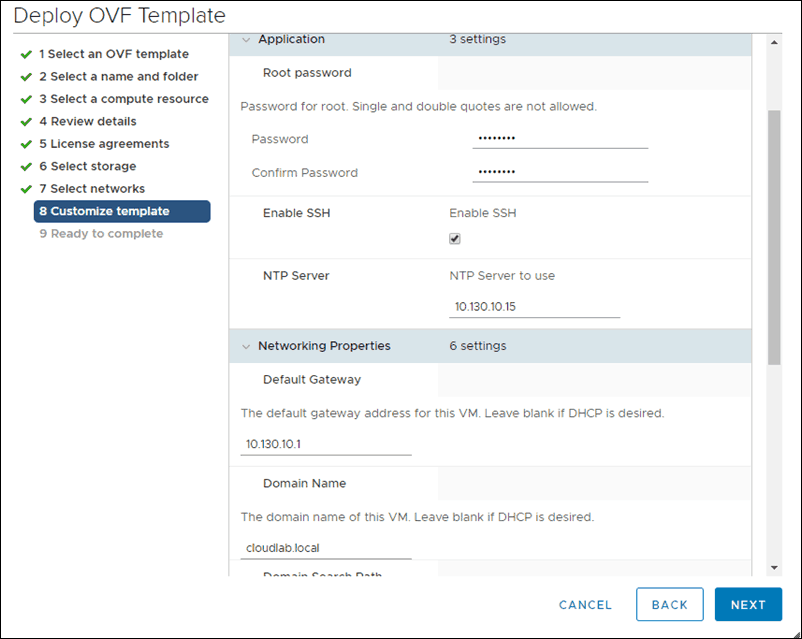
- Ready to complete. Review the settings. You can also select Power on after deployment. Click Finish to deploy the appliance.
Track the progress of the deployment under Recent Tasks at the bottom of your screen.
Note: For additional information on deploying the vCAV on-prem appliance, please refer to official VMware documentation.
Complete vCAV Configuration Wizard
The appliance is deployed now. However, you still need to configure vCAV:
- Log in to your vCAV appliance at https://your-appliance-IP/ui/admin. Use the root password defined during OVA deployment.
- Change the root password. Set and confirm a new password. Create a strong password with at least eight (8) characters. Make sure to use lowercase, uppercase, numeric, and special characters.
- To get started, you will need to configure a Lookup Service endpoint. To do so, select Run Initial Setup Wizard.
- Once the Initial Setup window opens, start with the first page in the navigation pane.
- Site Details. In it, type your Site Name and optionally, a short Description about the site. Click Next, when finished.
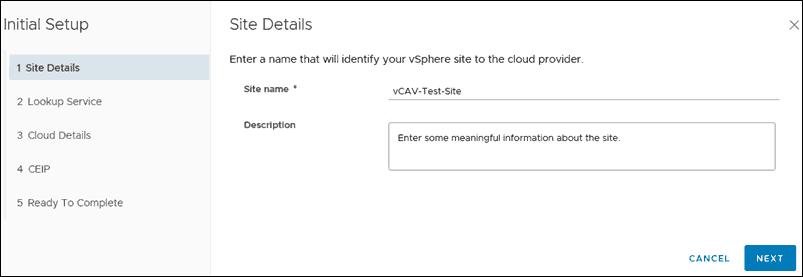
- Move on to the second step, the Lookup Service. Enter your connection details to set up the lookup service along with SSO admin credentials.
- Lookup service address. Type in the following URL, adding the IP address of your vCenter of PSC: https://Ip-of-your-psc:443/lookupservice/sdk
- Enter SSO admin account credentials in the Username and Password field.
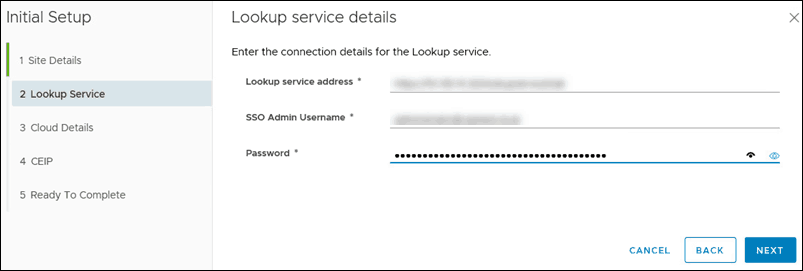
7. Click Next and accept the SSL certificate of the vCenter Server Lookup to continue.
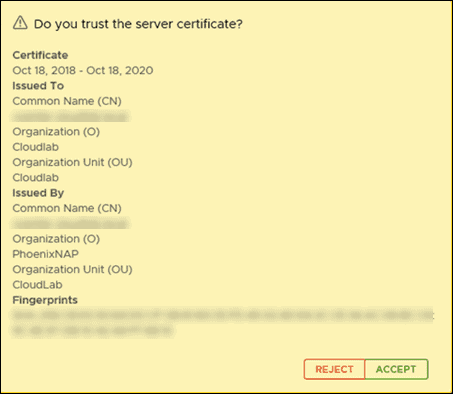
8. Proceed to the configure Cloud Details by pairing up your vCloud and vCAV sites.
9. Define the Public API Endpoint:
Phoenix endpoint – https://PHXDSCVCAV.phoenixnap.com:443Ashburn endpoint – https://ASHVPDCVCAV.PhoenixNap.com:443
10. Configure your organization’s credentials for logging in to the cloud site. Type in Organization Admin (user@org) name and the corresponding Password.
11. Optional: Select Allow Access from Cloud. If you select this feature, the cloud provider and organization administrators can access and perform certain operations through the vCloud Availability Port.
Without authenticating to the on-premises site, users can:
- Discover on-premises workloads and replicate them to the cloud.
- Reverse existing replications to the on-premises site.
- Replicate cloud workloads to the on-premises site.
If you leave this feature deselected, configuring new replications will only be accessible to users authenticated to the on-premises vCloud Availability Portal. Additionally, no existing replications will be reversed from the Portal.
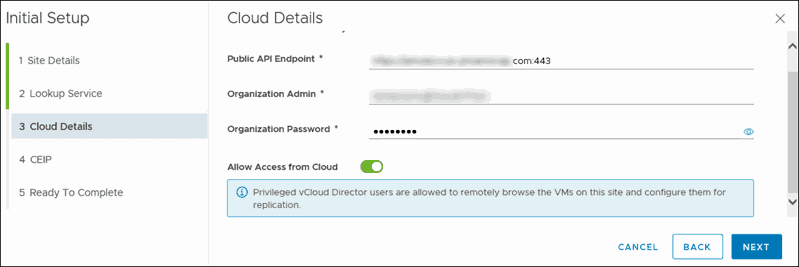
12. Click Next and accept the SSL certificate for vCloud Availability Public API endpoint.
13. Then, decide whether you want to participate in the VMware Customer Experience Improvement Program (CEIP). To join, confirm your choice, and click Next.
14. Move on to Ready to Complete. It shows the details you have provided in the previous steps. Verify that everything is accurate.
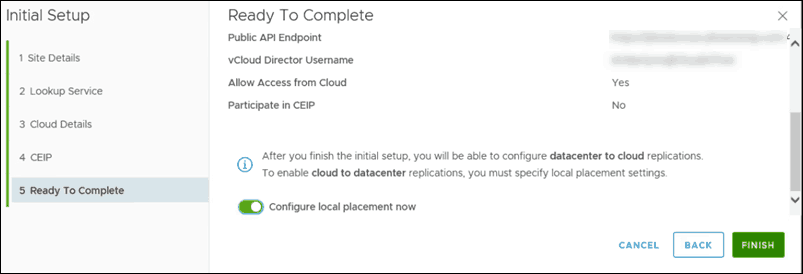
Check Configure local placement now to enable cloud to datacenter replications. Leaving the box unchecked requires additional set up to configure the replications.
15. Click Finish to complete the initial setup.
VM Replications
Replication is the process of copying a virtual machine (VM) from one location to another. The first replication creates a copy at a remote location, after which the replicated VM is updated according to a predefined schedule to match the source VM.
There are two types of replication:
- Incoming replications
- Outgoing replications
Incoming Replications
Configure incoming replications to secure a remote workload by replicating it to the local vCloud location. Such replications run on a remote site, protected at the local VCD location.
Outgoing Replications
Configure outgoing replications to secure a local workload by replicating it to a remote site (on-prem or vCloud Director). Outgoing replications run on a local site, protected at the remote location.
How to Configure Incoming Replication
After deployment, you can configure local replications. This process is required if you wish to replicate from the cloud to the local vCenter or use the reverse replication after a failover.
- First, log in to the tenant vCloud Org, click on the hamburger button and then on Availability.
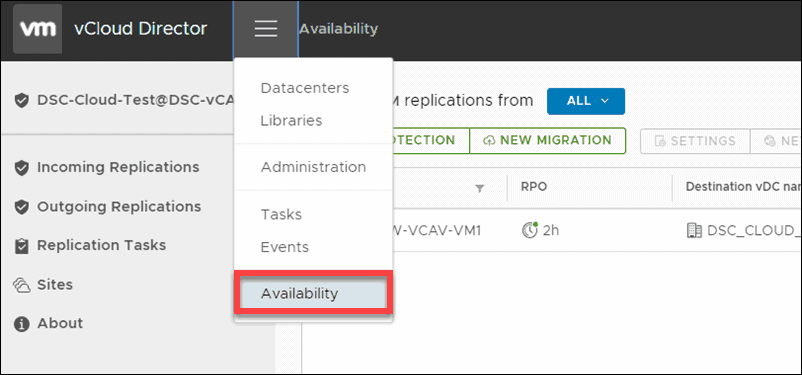
Note: If prompted to select or confirm a certificate, click Cancel.
- Navigate to Incoming Replications page and click on from On-Prem. Here, you can configure protection for on-premises VMs.
- Click on New Protection. The New Incoming Replication window will appear.
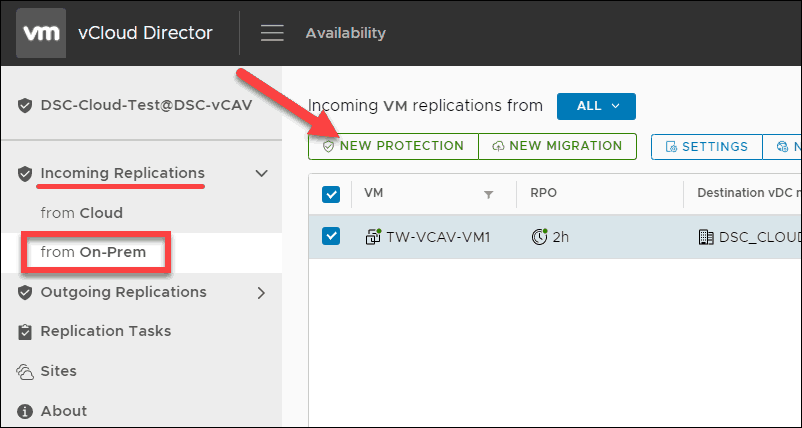
- In it, you first need to define the Source Site, which is the on-premises site owning the vApps and VMs you want to replicate. Click Next.
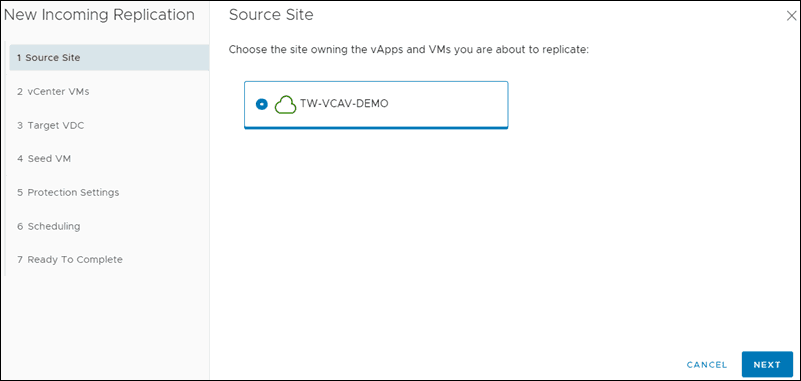
- Next, select the VMs you want to protect by checking the corresponding box(es). To continue, click Next.
- Move on to selecting the Target VDC.
- On the page Seed VM, choose whether you want to seed. This option is only available if the VMs and VApps marked to be replicated already have an older copy on the target site. The older version is then used as a seed to speed up data transfer.
- Next, configure the Protection Settings by establishing your:
- RPO – Target recovery point objective
- Storage policy – Enterprise-High
- Retention policy – How many instances you want to preserve over a time period, evenly
- Enable Quiesce – Ensure application-level consistency prior to creating an instance
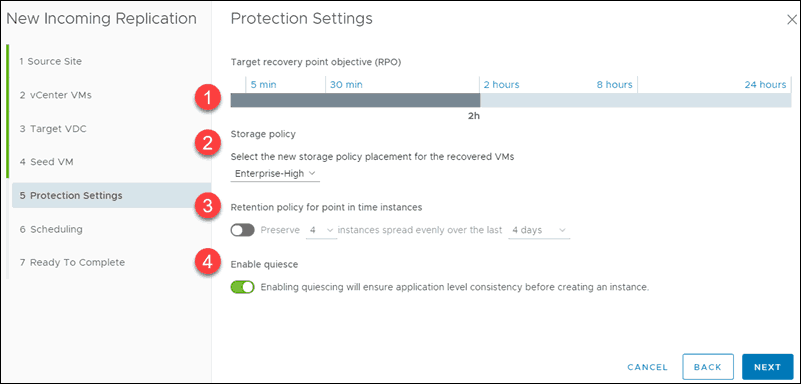
- Once you define protection settings, continue to Scheduling. Here, check if you want to start synchronization Immediately or At a specific time. Then, click Next.
- On the final page, Ready to Complete, verify settings and click FINISH.
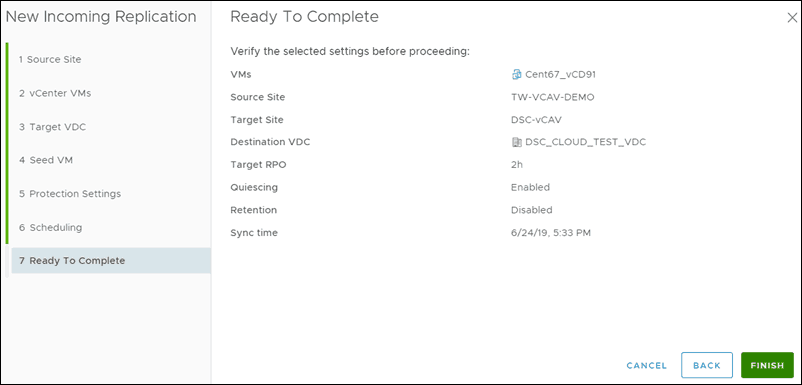
Reviewing the State of Existing Replications
You can review the state and details of all on-premises incoming replications. With the interface, you can see all the information concerning the configuration for replicating, information on the source and destination, as well as the health of the workload.
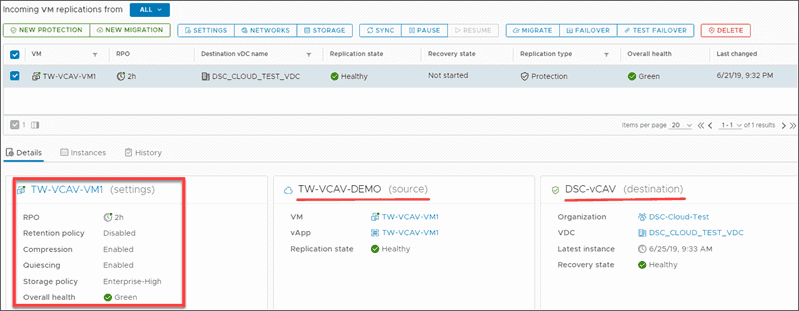
Summary
VMware vCloud Availability is a user-friendly interface for disaster recovery and workload migration.
After reading this guide, you should now have successfully deployed a vCAV on-prem appliance, allowing you to connect to and replicate to or from your vCenter. Additionally, the guide demonstrates how to configure incoming replications, monitor, and protect workloads.